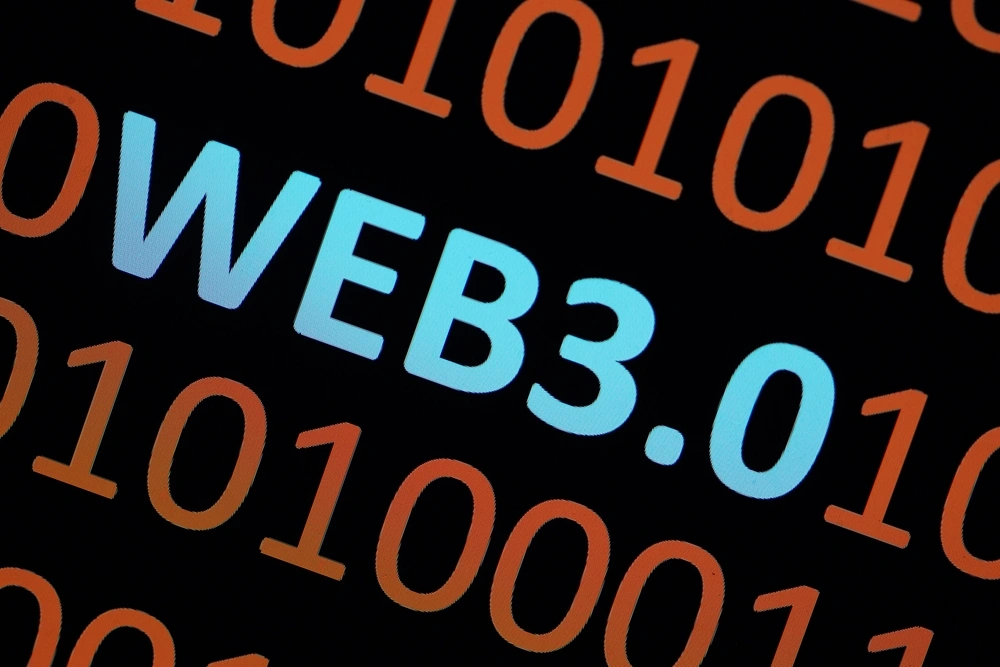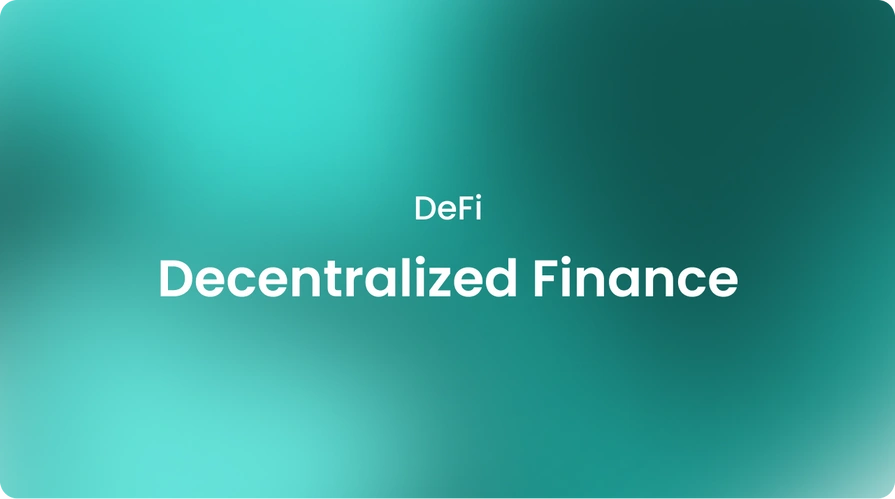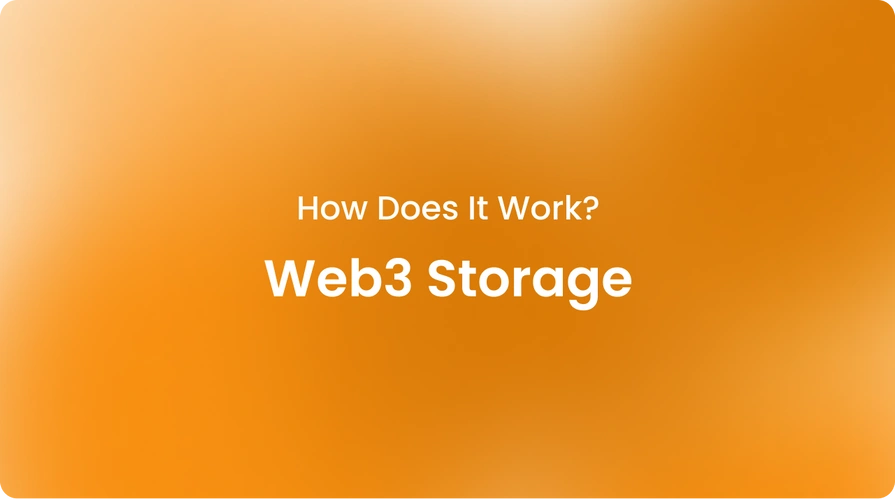|technology, knowledgehub
What Is Web3?

The internet has evolved rapidly since its inception, going through different phases known as the World Wide Web 1.0, 2.0, and now on the cusp of 3.0, also known as Web3. But what exactly is Web3, and how does it differ from previous iterations of the internet?
Join us in this blog as we explore Web3, how it differs from Web1 and Web2, how it works, its benefits, and common questions related to the Web3 ecosystem.
Web3 is a decentralized web that builds on blockchain technology, aiming to create a more trustless and open network. It uses smart contracts, cryptocurrencies, and decentralized applications (dApps) to control users' personal data and digital identities. Let's take a deeper look!
What are Web1 and Web2?
Web1, also called the read-only web, emerged in the early 1990s and was primarily about accessing information through websites and blogs. A few big companies centralized the web and controlled how users interacted online.
Web1 is a static web of static information, like personal websites or blogs. Web2 is a social web of interactions, like social media platforms. Both Web1 and Web2 have evolved to provide a more engaging and interactive experience for users.
How is Web3 different from Web1 and Web2?
Web 1.0 refers to the read-only Web; Web 2.0 is a participatory social Web; and Web 3.0 is the read, write, and execute Web. The next evolution of Web2 is Web3, where information is exchanged in full transparency without central governance.
Web3 marks a philosophical shift to decentralization, where users are in control of their identity, data, and interactions. Building on the blockchain technology that powers cryptocurrencies, Web3 aims to give power back to its users through its decentralized architecture and incentives.
What is the concept of Web3?
Here are some of the concepts:
- Decentralization
- Users should have ownership of their data.
- Token-based economy
- Trustlessness
- Interoperability
The power of blockchain technology allows users to view the history of past owners and crypto token exchanges primarily through crypto wallet transactions on Web3, a decentralized information web connected to a public ledger.
Decentralization, blockchain, distributed system storage, cryptocurrency, and tokens are some of the fundamental building blocks powering Web3 applications and infrastructure.
What is the reason behind the name Web3?
Coined as the third major iteration of the World Wide Web, "Web3" builds upon the foundations of its predecessors and introduces disruptive new blockchain-based technologies and designs to resolve issues around centralized control and user data exploitation.
How does Web3 work?
At its core, Web3 technology leverages blockchain-based, decentralized networks and economies. Technologies like cryptocurrency bring programmability and transparency to transactions without relying on centralized intermediaries.
Users have control over their digital footprint through self-sovereign identity on the blockchain, and tokens are used to provide activity incentives instead of data exploitation.
What are the benefits of Web3?
Some of the key benefits of Web3 model over previous internet iterations include user ownership, transparency, censorship resistance, trust minimization through decentralization, standardization, and interoperability of systems.
Web3 proponents argue it could bring along benefits like full user autonomy, better incentive structures for creators through token economies, and applications with new functionalities enabled by decentralized technologies.
What are the disadvantages of Web3?
Web 3.0 presents an exciting new paradigm for the internet, but it also faces challenges that require addressing as the technology matures. Here are some of the disadvantages of Web3:
- Interoperability between different blockchain networks remains limited. Achieving integration will require agreed-upon technical standards.
- Cryptocurrencies and digital assets have proven volatile at times due to speculation. Mass adoption may rely on stabilized digital assets.
- Significant energy use by resource-intensive networks raises environmental concerns that projects are working to mitigate through alternative approaches.
Why is Web 3.0 important? What can you do on Web3?
By striving to eliminate centralized control and single points of failure, Web3 introduces a high degree of robustness, availability, and fault tolerance. It offers solutions to issues like online censorship, data breaches, and privacy violations that plague current internet systems.
Services leveraging Web3 range from social media and content platforms to e-commerce, games, and metaverse applications. The concept of the metaverse, where augmented and virtual reality blend with physical reality, aligns well with the decentralized ethos of Web 3.
Web3 technologies would build a truly open metaverse, granting creators and users sovereignty over their contributions and interactions. Common uses include trading cryptocurrencies and NFTs, decentralized finance (DeFi), digital identity management, and interacting with dApps.
New decentralized use cases are also emerging in areas like verifiable credentialing, DAOs (Decentralized Autonomous Organizations), decentralized Web3 storage, and payroll and payments.
What is the purpose of using Web3?
- Gaming and social media
- Finance
- Arts & Collectibles
- Data Management
- Identity
Web 3.0 allows users to sell their data through decentralized networks, ensuring ownership control through powerful computing resources like mobile phones, desktop computers, appliances, automobiles, and sensors. Therefore, it offers innovative solutions and can be utilized in various areas.
What technologies support Web3?
The key technologies enabling the decentralized vision of Web3 include blockchain, cryptocurrencies, and distributed ledger technologies. Blockchain and decentralized finance provide the foundational framework for building decentralized applications and enabling transactions without intermediaries.
What are some examples of Web3 in the real world?
Some real-world applications of Web3 include decentralized finance (DeFi) platforms that allow lending, borrowing, and earning yields without banks. Non-fungible tokens (NFTs) have transformed digital art and collectibles by recognizing unique ownership on the blockchain.
Social media dApps are exploring decentralized community points and moderation. The use of blockchain for transparent transactions is one example of how Web3 and blockchain technologyare being leveraged by platforms like Cryptobunq.
Cryptobunq is a one-stop-shop crypto service provider that you can rely on for various blockchain-powered crypto solutions. From tokenization to exchange APIs, CBQ is here to provide you with the best crypto services. You can explore our case studies to see the expertise of Cryptobunq!
Does Web3 require coding?
While some degree of technical know-how helps, Web3 does not intrinsically require developers or coding skills. As with the existing internet, there will be user-friendly applications that ordinary people can engage with without coding.
For example, non-technical individuals can use crypto wallets to store or exchange cryptocurrencies without worrying about private keys or transaction fees.
How is Web3 related to cryptocurrency and NFTs?
Cryptocurrencies play a vital role in the decentralized vision of Web3 by allowing for peer-to-peer value transfers without intermediaries. They also provide the economic incentives needed to support distributed networks through "gas" fees paid in crypto.
As a result, Web3-enabled platforms often implement their own proprietary crypto coins to facilitate participation. Non-fungible tokens also allow true digital ownership and open up new economies in Web 3.
By issuing unique ID tags to items on the blockchain, NFTs have transformed digital art, collectibles, and in-game assets. Additionally, they unlock new revenue streams for content creators by enabling direct fan funding and secondary markets.
Why is Web3 powerful? Is Web3 still the future?
Web3 promises to create a more equitable internet by empowering individuals with ownership and control over their online identity and data, ensuring just distribution of value and decision-making.
Blockchain's transparency further introduces accountability that could help curb issues like censorship, data misuse, and centralized failures we have seen with previous web generations.
While still in its early stages, Web3 shows strong momentum as innovators continue building its underlying technologies and applications. Experts report that investors have poured over $25 billion into the Web3 ecosystem to date.
How can you get involved in Web3?
There are many ways to start engaging with and benefiting from the emerging technologies of Web3. A great first step is simply learning more through online resources and local blockchain meetups.
From there, one can set up a Web3 wallet to safely store and use digital assets when interacting with dApps. You can also get involved in Web3 with a secure crypto service provider like Cryptobunq.
By integrating CBQ services into your individual and business projects, you can get involved in the Web3 ecosystem and leverage your business for prospective business growth with blockchain technology. Contact us today and start to explore the benefits of cryptocurrencies and blockchain for your business!













